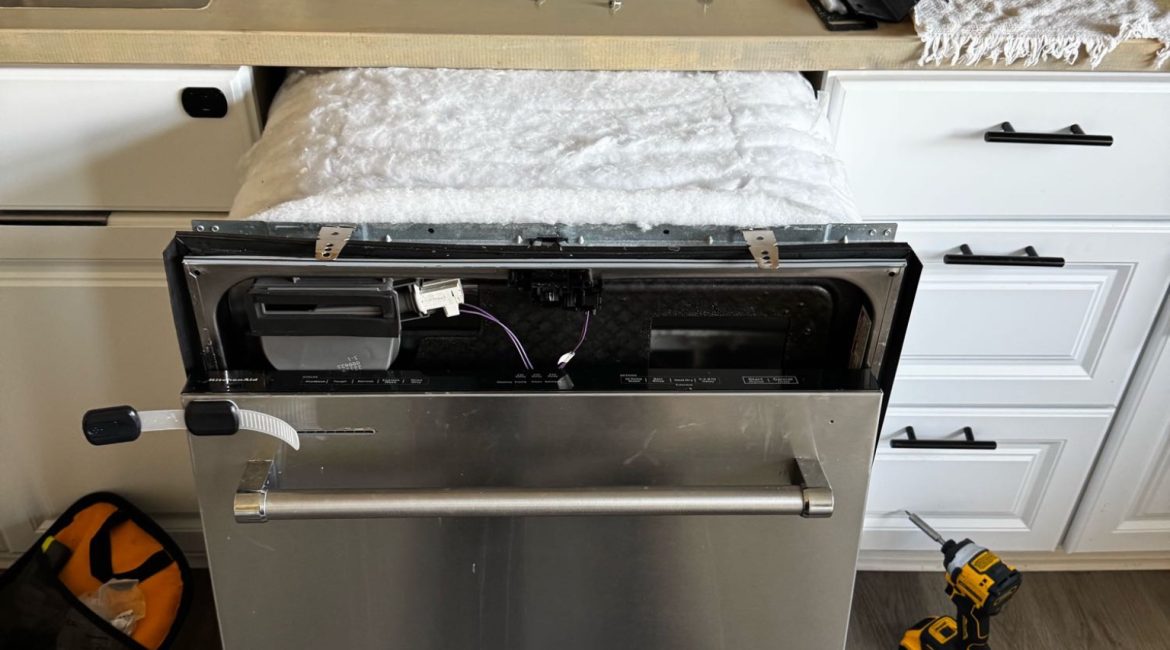One of the most frustrating outcomes after running your dishwasher is opening the door and discovering that your dishes are not sparkling clean, but instead covered in a cloudy film. Cloudy dishes not only look unappealing, but they can also indicate underlying issues with your dishwasher or water supply. Two of the most common culprits behind cloudy dishes are hard water deposits and a malfunctioning rinse aid dispenser. Understanding the causes and solutions can help restore your dishwasher’s performance and ensure that your glassware and dishes come out crystal clear.
Hard Water Deposits
Hard water contains a high concentration of minerals such as calcium and magnesium. When hard water passes through your dishwasher, these minerals can leave behind a chalky white residue on your dishes and glassware. Over time, this residue builds up, making your dishes look perpetually cloudy no matter how many times you wash them.
The problem is particularly noticeable on glassware because the transparent surface makes deposits easy to spot. Unlike food particles or detergent residue, hard water deposits are not easily removed by regular washing. Without intervention, these stains can become permanent, causing etching and reducing the lifespan of your dishes.
Signs that hard water is the issue include:
- A white, chalky film on dishes, particularly glasses.
- Mineral buildup visible inside the dishwasher itself, especially on the heating element or spray arms.
- Streaks or spots that do not wipe off easily.
To combat hard water, many households rely on dishwasher salt, water softening systems, or specialized detergents formulated for hard water conditions. Rinse aid is also crucial, as it helps prevent mineral spotting by improving water drainage during the rinse cycle.
Malfunctioning Rinse Aid Dispenser
Rinse aid is designed to reduce water spots and film by allowing water to sheet off dishes more effectively. A properly functioning rinse aid dispenser automatically releases the correct amount of liquid during the rinse cycle. However, when the dispenser malfunctions, your dishwasher cannot distribute rinse aid properly, leading to cloudy results.
Common issues with rinse aid dispensers include:
- The dispenser is clogged or blocked, preventing release.
- The cap is broken or improperly sealed, causing leaks.
- The dispenser mechanism has failed electronically or mechanically.
If the rinse aid dispenser is faulty, even soft water conditions may still result in cloudy dishes. Without rinse aid, water droplets cling to dishes, leaving behind spots as they dry.
How to Identify the Root Cause
Determining whether cloudy dishes are the result of hard water or a malfunctioning rinse aid dispenser requires a little troubleshooting.
- Check other appliances – If you see mineral buildup on faucets, showerheads, or kettles, hard water is likely the issue.
- Test with vinegar – Soak a cloudy glass in vinegar for a few minutes. If the cloudiness disappears, hard water deposits are the culprit. If it remains, the problem may be etching or inadequate rinsing.
- Inspect the rinse aid dispenser – Ensure it is filled, clean, and closing properly. Run the dishwasher with rinse aid to check if the results improve.
Preventing Cloudy Dishes
- Use rinse aid regularly: Even if your water is moderately hard, rinse aid can make a noticeable difference in keeping dishes spotless.
- Adjust detergent amount: Using too much detergent in hard water conditions can worsen residue problems.
- Clean the dishwasher: Regularly clean the filter, spray arms, and interior to prevent buildup from interfering with water flow.
- Install a water softener: In areas with very hard water, a whole-house or dishwasher-specific softener is often the most effective long-term solution.
When to Call for Professional Help
If you’ve tried troubleshooting and your dishes are still cloudy, the issue may be more complex than it appears. Possible hidden problems include:
- A faulty rinse aid dispenser that needs repair or replacement.
- A malfunctioning heating element that prevents effective drying.
- Internal water flow issues or clogged lines reducing rinse effectiveness.
A professional technician can diagnose the exact cause and carry out repairs to restore your dishwasher’s performance. Ignoring cloudy dishes may lead to more serious issues, including permanent damage to your glassware and reduced efficiency of the dishwasher itself.
Cloudy dishes after a wash cycle can be traced back to two primary issues: hard water deposits or a malfunctioning rinse aid dispenser. Identifying the root cause is the key to finding the right solution, whether it’s installing a water softener, cleaning or repairing the rinse aid dispenser, or calling in a professional.
If your dishwasher consistently leaves dishes looking less than perfect, don’t settle for cloudy results. Contact Oceanside Appliance Service Center for expert diagnosis and reliable repair solutions. Our experienced technicians can restore your dishwasher’s performance and help ensure your dishes come out sparkling clean every time. Call us today to schedule a service appointment and bring back the shine to your kitchen.
Contact us


